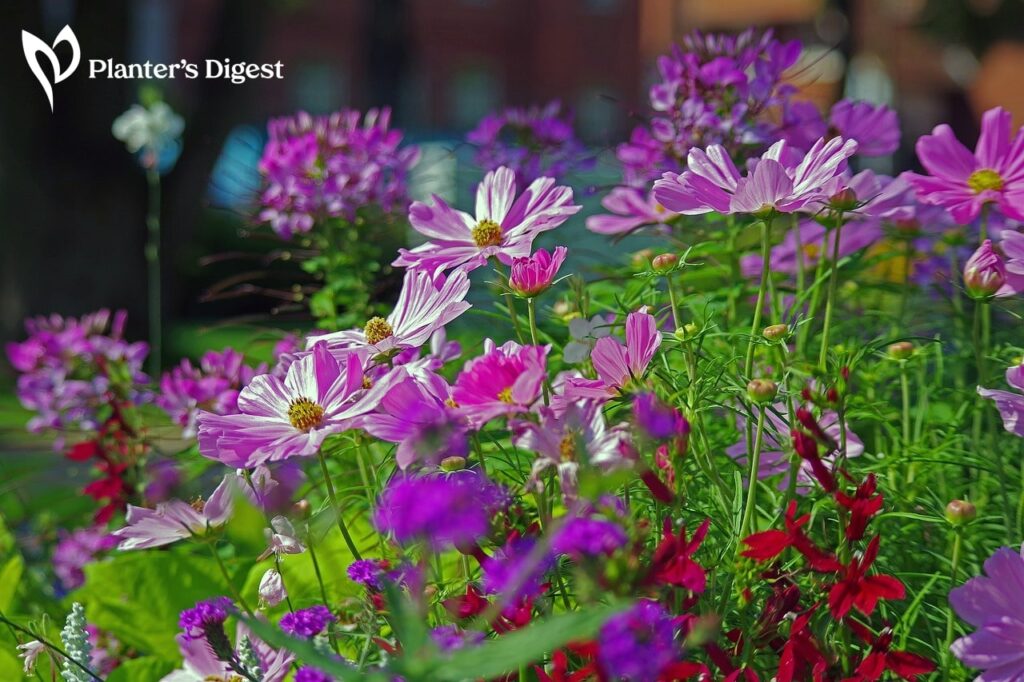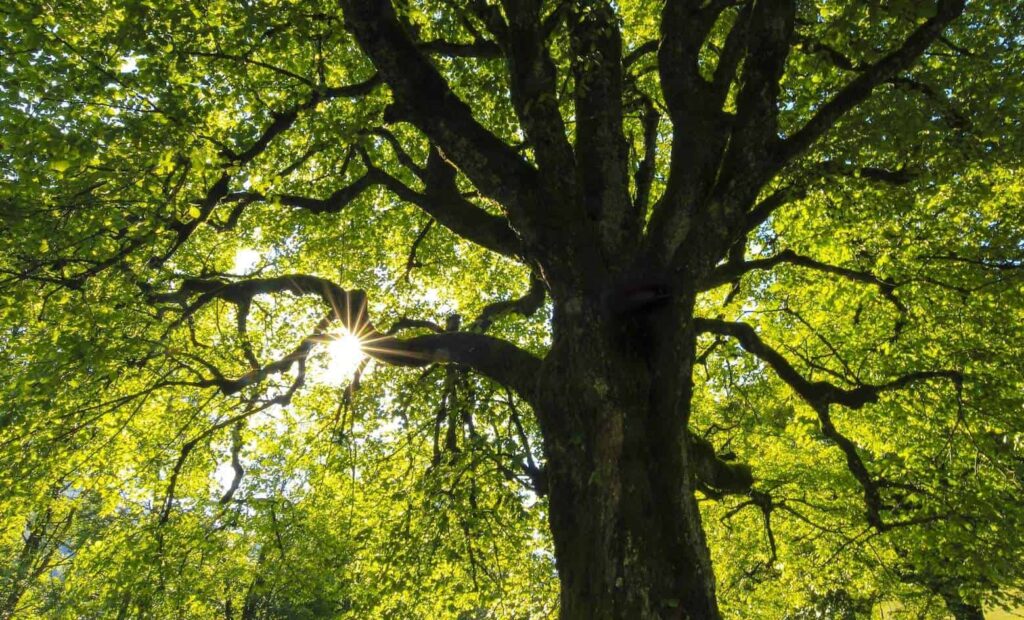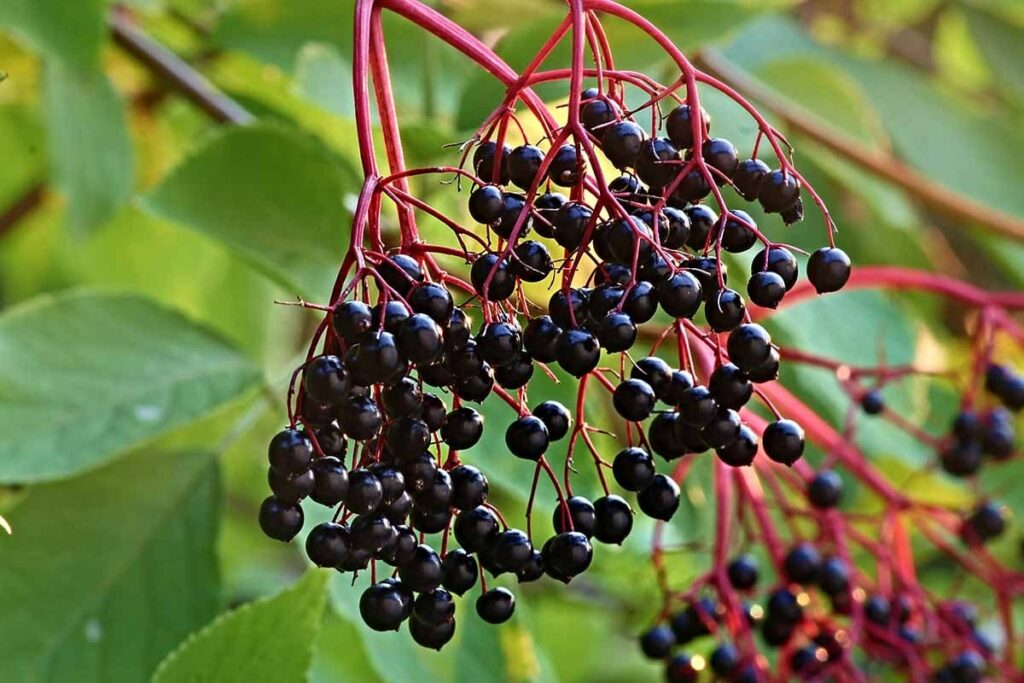Are you ready to build a garden that blooms all year long? You’re on the right page because we’ve curated the ultimate floral lineup with the 34 best flowering plants that will keep your garden blooming.
Whether you’re a newbie gardener or a seasoned plant parent, read on and discover the best flowers for your garden for all seasons!
1. Flaming Katy (Kalanchoe blossfeldiana)
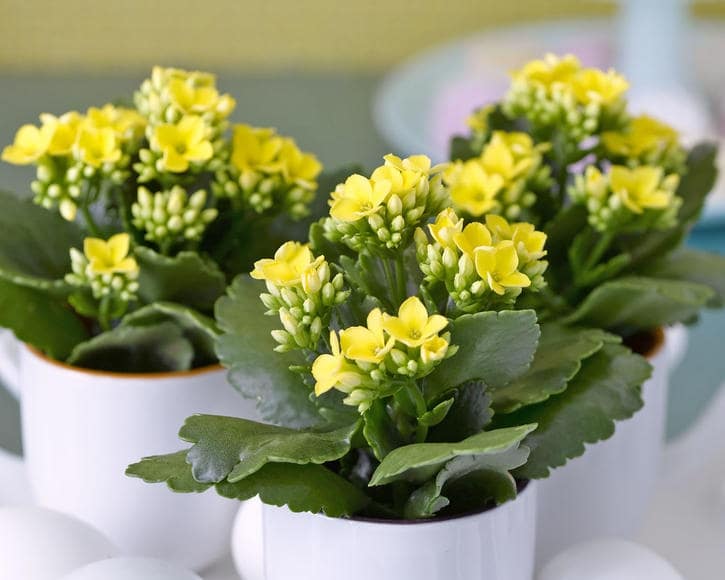
| Scientific Name | Kalanchoe blossfeldiana |
| Common Name | Flaming Katy, Christmas Kalanchoe |
| Origin | Madagascar |
| Family | Crassulaceae |
| Plant Type | Perennial succulent |
| Soil Requirements | Well-drained, sandy |
| Blooming Season | Spring to winter |
| Light Exposure | Full sun to partial shade |
| Size | 1-2 ft |
| Plant Zone | Not hardy |
| Growth Rate | Fast |
| Toxicity | Non-toxic |
The Flaming Katy boasts vibrant, long-lasting flower clusters in shades of pink, orange, red, and yellow. It’s a succulent native to Madagascar that’s low-maintenance and thrives in bright, indirect sunlight.
It can store water in its thick, scalloped leaves and purify the air by removing toxins. Because of its compact size, the Flaming Katy is ideal for windowsills, tabletops, patios and borders in your home.
2. Bougainvillea (Bougainvillea spectabilis)
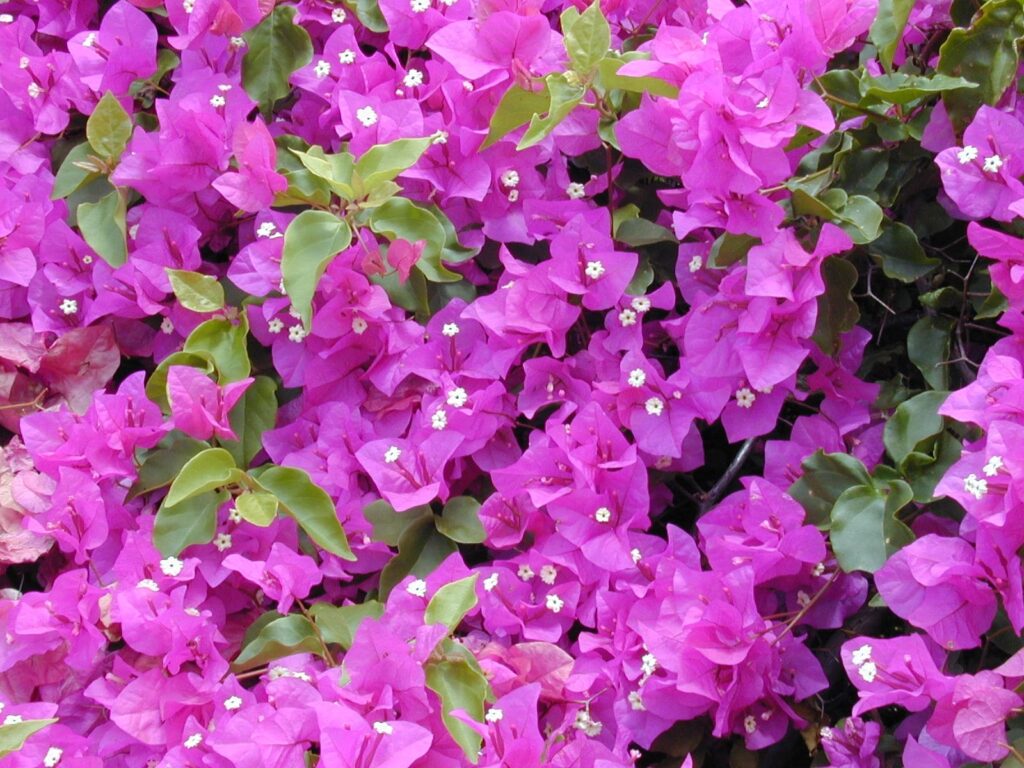
| Scientific Name | Bougainvillea spectabilis |
| Common Name | Bougainvillea, Paperflower |
| Origin | South America |
| Family | Nyctaginaceae |
| Plant Type | Vine |
| Soil Requirements | Rich, well-drained |
| Blooming Season | Year-round |
| Light Exposure | Full sun to partial shade |
| Size | 10-20 ft |
| Plant Zone | Tropical to frost-tender |
| Growth Rate | Moderate |
| Toxicity | Mildly toxic |
The Bougainvillea is a vibrant climbing plant native to South America, known for its colorful bracts that are often mistaken for flowers. These colorful papery bracts come in magenta, purple, orange, red, white, and even captivating tri-colors.
The Bougainvillea is an excellent choice for outdoor gardens, where it can be trained to climb trellises, fences, and walls. Its dense foliage also provides ideal shade and medicinal properties, making it a great addition to herbal gardens.
3. Golden Trumpet (Allamanda cathartica)
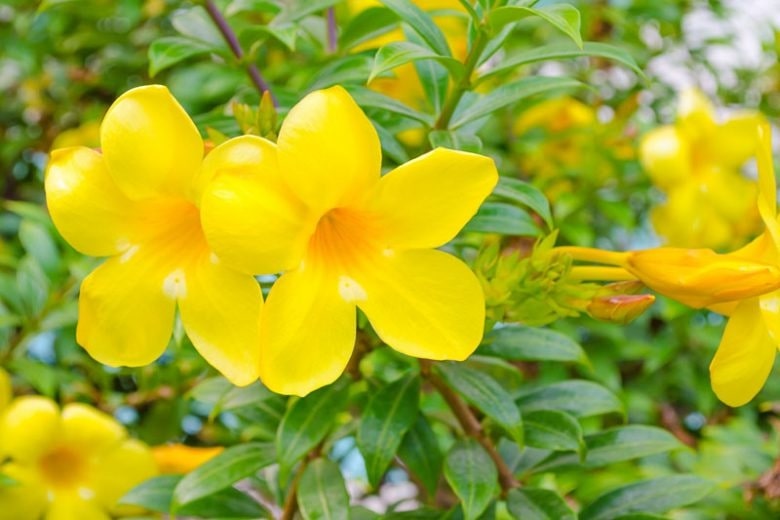
| Scientific Name | Allamanda cathartica |
| Common Name | Golden Trumpet, Yellow Allamanda |
| Origin | South America |
| Family | Apocynaceae |
| Plant Type | Vine |
| Soil Requirements | Rich, well-drained |
| Blooming Season | Spring to fall |
| Light Exposure | Full sun to partial shade |
| Size | 10-20 ft |
| Plant Zone | Tropical to frost-tender |
| Growth Rate | Moderate |
| Toxicity | Mildly toxic |
The Golden Trumpet is known for its yellow blossoms resembling trumpets and emitting a sweet, delicate fragrance. It’s a fast-growing vine native to South America and thrives in warm climates, full sun or partial shade.
Since it’s a climber, the Golden Trumpet is ideal for covering fences, trellises, or arbors, creating a lush green tapestry adorned with vibrant flowers. It can also attract pollinators and contributes to air purification by removing toxins, creating a fresher garden.
4. Lantana (Lantana camara)
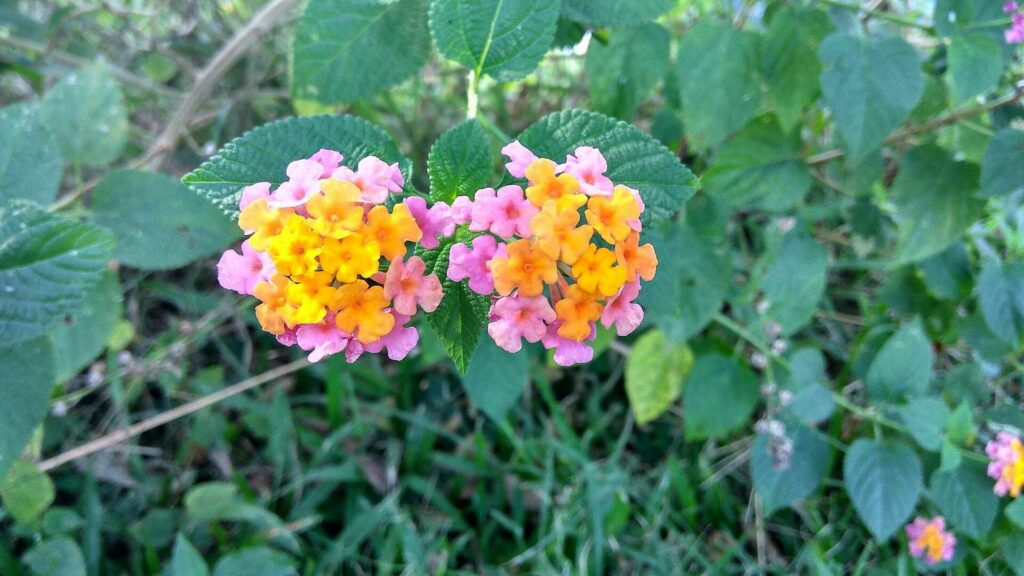
| Scientific Name | Lantana camara |
| Common Name | Lantana, Red Sage |
| Origin | Central and South America |
| Family | Verbenaceae |
| Plant Type | Perennial shrub |
| Soil Requirements | Well-drained, sandy |
| Blooming Season | Spring to frost |
| Light Exposure | Full sun to partial shade |
| Size | 3-6 ft |
| Plant Zone | Hardy in zones 8-11 |
| Growth Rate | Fast |
| Toxicity | Mildly toxic |
The Lantana is indigenous to the Americas and Africa and offers clusters of tiny flowers, resulting in a kaleidoscope of shades of red and orange to yellow, purple, and white.
This plant has antimicrobial and insecticidal properties, making it a potentially valuable plant for natural pest control in your garden. You can also take advantage of its compact size and use it to brighten up your window sills and tabletops.
5. Crown of Thorns (Euphorbia milii)
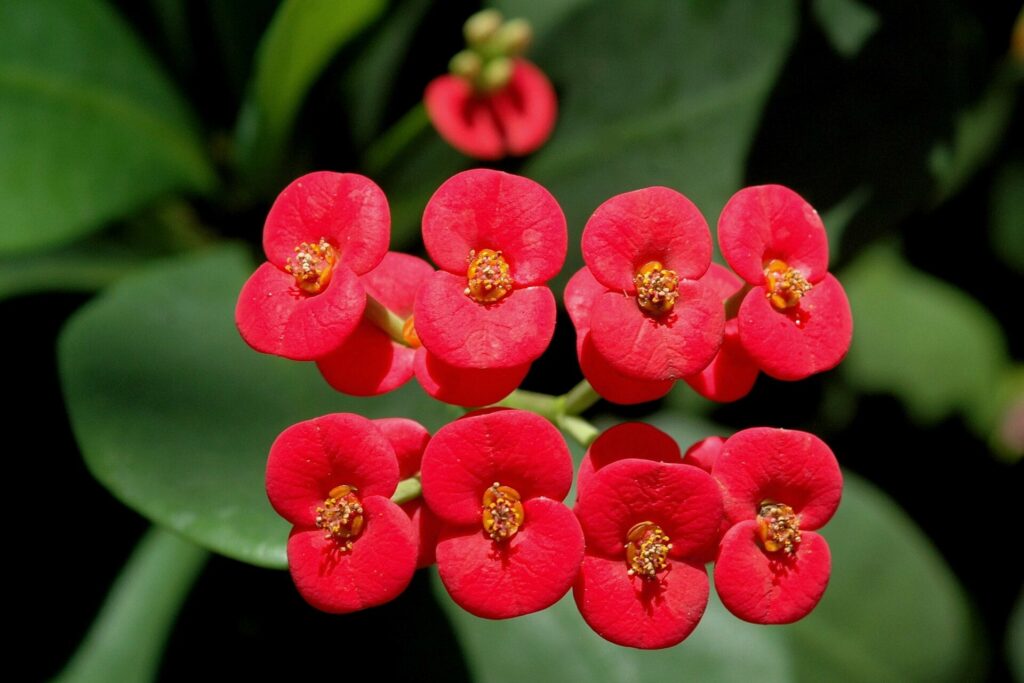
| Scientific Name | Euphorbia milii |
| Common Name | Christ Plant, Crown of Thorns |
| Origin | Madagascar |
| Family | Euphorbiaceae |
| Plant Type | Shrub |
| Soil Requirements | Well-drained, sandy |
| Blooming Season | Spring to fall |
| Light Exposure | Full sun to partial shade |
| Size | 3-6 ft |
| Plant Zone | Tender |
| Growth Rate | Moderate |
| Toxicity | Toxic |
The Crown of Thorns is a captivating succulent plant known for having sharp, thorn-like spines along its thick, green stems, reminiscent of the crown worn by Jesus Christ, hence its name. It’s native to Madagascar and thrives in dry, warm climates.
The Crown of Thorns will add a touch of exotic charm to your windowsill or cascading floral design from a hanging basket. It’s a versatile and low-maintenance plant, making it an excellent choice for gardeners of all levels.
6. Twinspur (Diascia barberae)
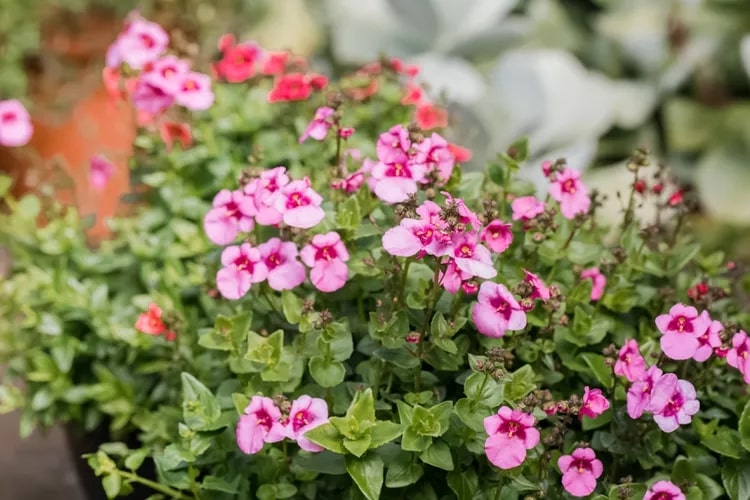
| Scientific Name | Diascia barberae |
| Common Name | Twinspur, Twinflower |
| Origin | South Africa |
| Family | Scrophulariaceae |
| Plant Type | Perennial |
| Soil Requirements | Well-drained, sandy |
| Blooming Season | Spring to fall |
| Light Exposure | Full sun to partial shade |
| Size | 1-2 ft |
| Plant Zone | Hardy in zones 7-10 |
| Growth Rate | Moderate |
| Toxicity | Non-toxic |
The Twinspur is famous for growing two prominent spur-like projections under each flower, filled with a sweet nectar that bees and other pollinators love. It’s native to South Africa and thrives in warm climates.
Since it’s compact and has a trailing habit, the Twinspur is perfect for hanging baskets and window sills. You can also use it to add a touch of elegance to borders, edging, and rock gardens with minimal care, perfect for busy gardeners.
7. Bird of Paradise (Strelitzia reginae)
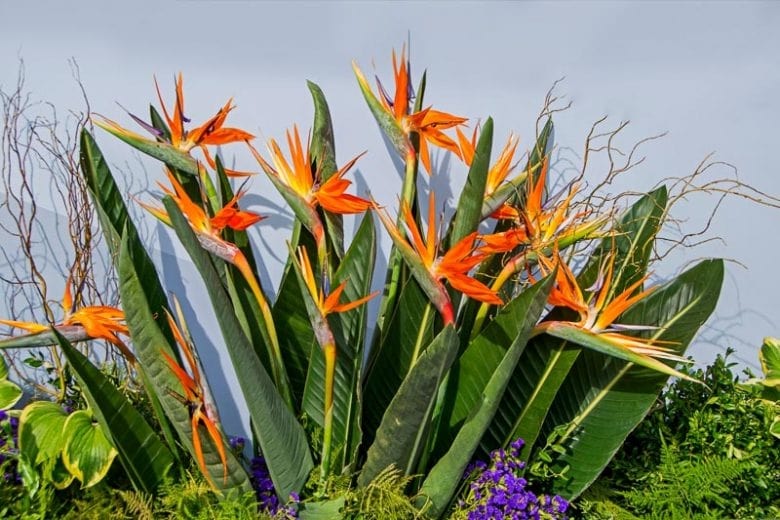
| Scientific Name | Strelitzia reginae |
| Common Name | Bird of Paradise, Crane Flower |
| Origin | South Africa |
| Family | Strelitziaceae |
| Plant Type | Perennial |
| Soil Requirements | Rich, well-drained |
| Blooming Season | Spring and summer |
| Light Exposure | Full sun to partial shade |
| Size | 5-10 ft |
| Plant Zone | Frost tender |
| Growth Rate | Moderate |
| Toxicity | Mildly toxic |
The Bird of Paradise is a unique tropical plant named after its striking flowers that look like a bird in flight. These flowers have vibrant orange and blue hues that emerge from boat-shaped bracts.
This versatile plant is native to South Africa and needs bright, indirect sunlight and regular watering to showcase its beauty in large containers or sunrooms. Outdoors, it’s an excellent border specimen plant, adding a touch of drama to gardens and patios.
8. Bottlebrush (Callistemon spp.)
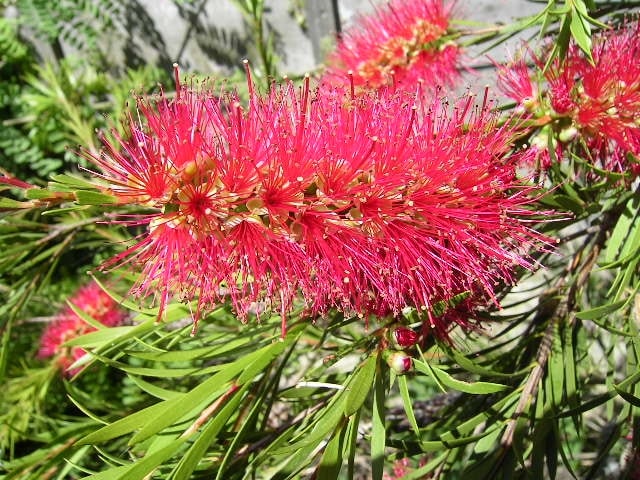
| Scientific Name | Callistemon spp. |
| Common Name | Bottlebrush |
| Origin | Australia |
| Family | Myrtaceae |
| Plant Type | Shrub/tree |
| Soil Requirements | Well-drained, sandy |
| Blooming Season | Spring to summer |
| Light Exposure | Full sun |
| Size | 10-20 ft |
| Plant Zone | Hardy in zones 8-11 |
| Growth Rate | Moderate |
| Toxicity | Non-toxic |
The Bottlebrush is famous for its unique, cylindrical flower spikes that resemble a bottle brush cleaner. Originally from Australia, the Bottlebrush thrives in sunny, warm climates and is tolerant of drought and frost, making it a perfect choice for busy gardeners.
It’s a fast-growing plant that you can use to create a dense, evergreen shrub or small tree in indoor and outdoor spaces. You can also grow it in a large pot and place it near a sunny window or as a specimen plant or hedge to attract pollinators in your garden.
9. Freesia (Freesia spp.)
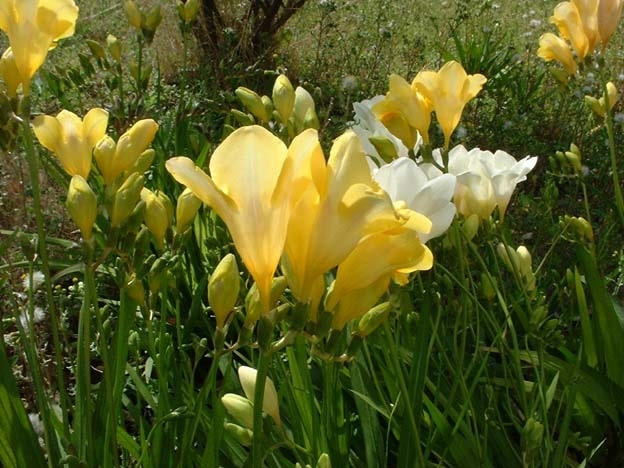
| Scientific Name | Freesia spp. |
| Common Name | Freesia |
| Origin | South Africa |
| Family | Iridaceae |
| Plant Type | Corm |
| Soil Requirements | Well-drained, sandy |
| Blooming Season | Spring |
| Light Exposure | Full sun to partial shade |
| Size | 1-2 ft |
| Plant Zone | Not hardy |
| Growth Rate | Moderate |
| Toxicity | Non-toxic |
The Freesia offers fragrant, trumpet-shaped flowers that bloom in clusters on slender stalks. This plant is native to South Africa and thrives in warm climates and well-draining soil.
They have a long vase life, which makes them popular cut flowers, while their corms are edible and are usually added to dishes for their sweet and nutty flavor. They’ll flourish as borders, containers, or groundcover to any garden.
10. Urn Plant (Aechmea fasciata)
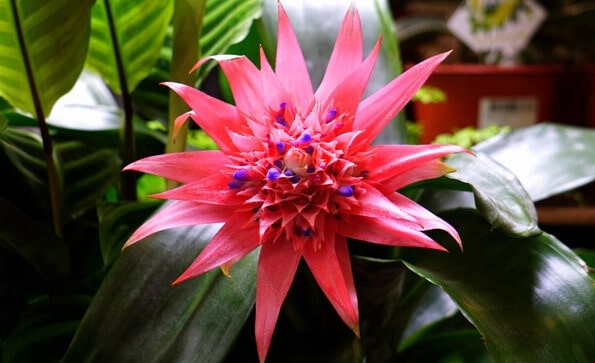
| Scientific Name | Aechmea fasciata |
| Common Name | Urn Plant, Zebra Plant |
| Origin | Brazil |
| Family | Bromeliaceae |
| Plant Type | Epiphyte |
| Soil Requirements | Well-drained, orchid mix |
| Blooming Season | Spring to summer |
| Light Exposure | Bright indirect light |
| Size | 1-2 ft |
| Plant Zone | Tropical |
| Growth Rate | Moderate |
| Toxicity | Non-toxic |
The Urn plant is famous for its vase-shaped structure that collects rainwater and nutrients. It’s native to South America and known for its symbiotic relationship with ants, exchanging with them shelter for protection and nutrient-rich debris.
The Urn Plant improves indoor air quality by removing harmful toxins while it needs bright, indirect light and requires regular watering. Since they love indirect sunlight, you can place them in patios and shaded gardens.
11. Flamingo Flower (Anthurium andraeanum)
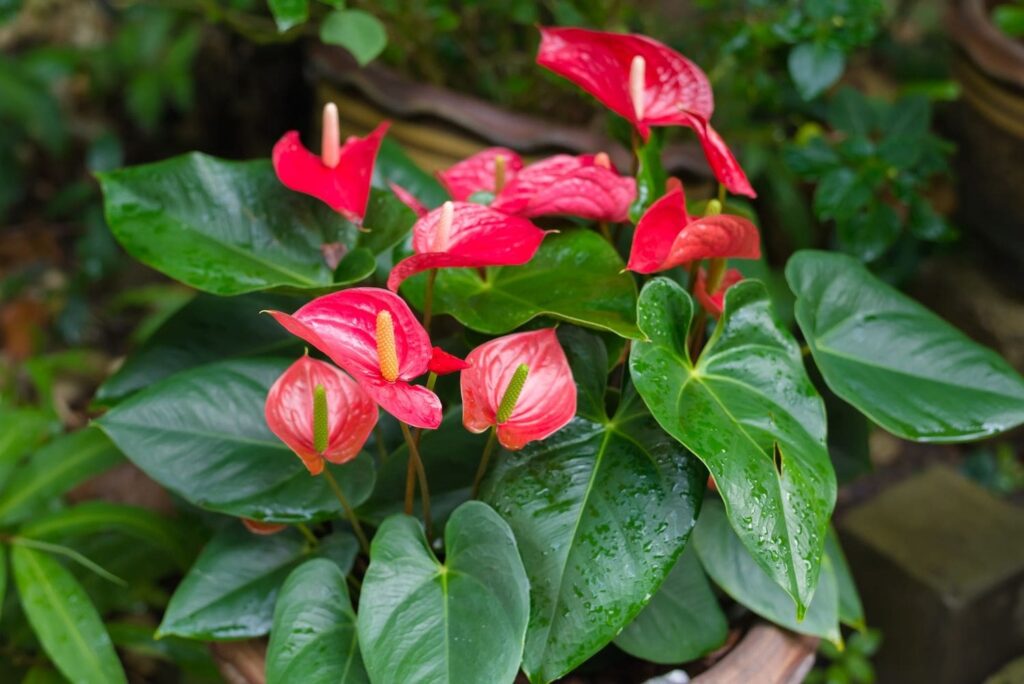
| Scientific Name | Anthurium andraeanum |
| Common Name | Flamingo Lily, Painter’s Palette |
| Origin | Central and South America |
| Family | Araceae |
| Plant Type | Perennial |
| Soil Requirements | Well-drained, rich |
| Blooming Season | Spring to fall |
| Light Exposure | Bright, indirect light |
| Size | 1-3 ft |
| Plant Zone | Tropical |
| Growth Rate | Moderate |
| Toxicity | Non-toxic |
The Flamingo Flower is a tropical plant with unique heart-shaped flowers resembling a flamingo’s tail. It’s native to the rainforests of Central and South America and thrives in warm, humid environments with bright, indirect sunlight.
The Flamingo Flower is a natural air purifier that can be grown as a specimen plant, in borders, or even as a groundcover, adding a touch of tropical flair to any garden or patio.
12. Agave (Agave spp.)
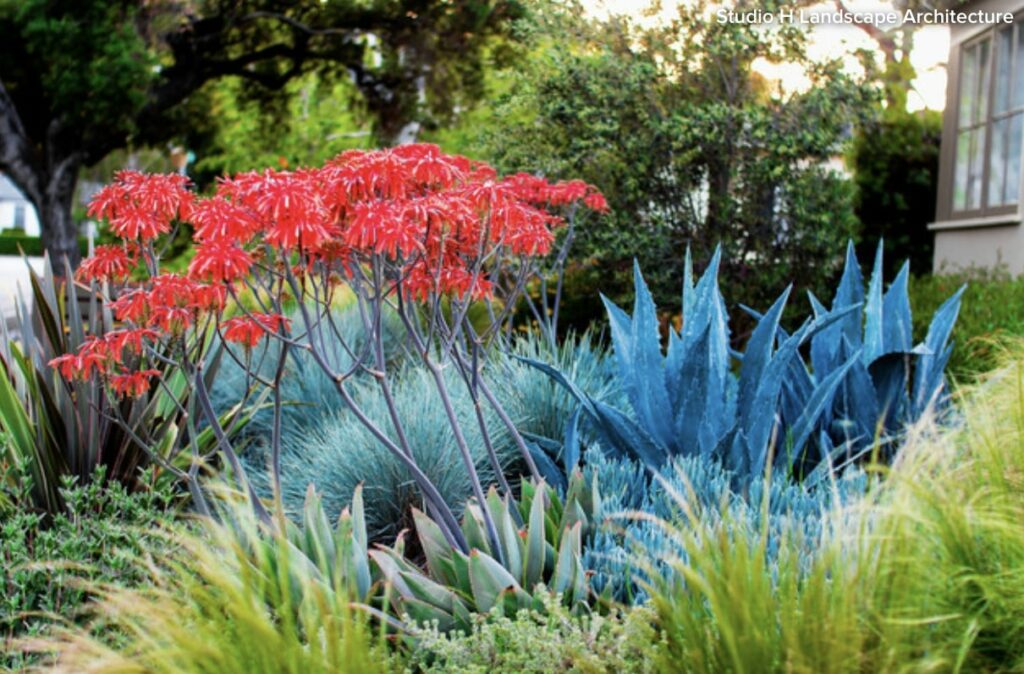
| Scientific Name | Agave spp. |
| Common Name | Century Plant, Maguey |
| Origin | Mexico and Central America |
| Family | Asparagaceae |
| Plant Type | Perennial succulent |
| Soil Requirements | Sandy, well-drained |
| Blooming Season | Spring |
| Light Exposure | Full sun to bright, indirect light |
| Size | 3-10 ft |
| Plant Zone | Varies by species |
| Growth Rate | Moderate |
| Toxicity | Mildly toxic |
The Agave flower stands out for its flowering stalk that can reach 20 feet or more and is adorned with greenish-yellow flowers. It’s indigenous to the arid regions of the Americas, and its succulent leaves can store water, helping it survive harsh conditions.
The Agave plant can be kept in large pots and placed near a sunny window, or you can enjoy it in your garden as a specimen plant. It blooms all year long and can last between 10 to 20 years, so you can surely enjoy it for a long time.
13. Red Ginger (Alpinia purpurata)
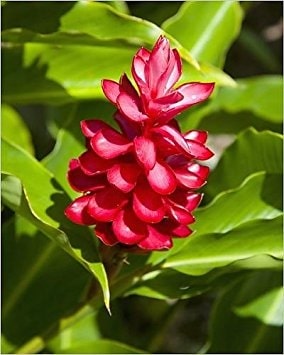
| Scientific Name | Alpinia purpurata |
| Common Name | Shell Ginger, Red Variegated Ginger |
| Origin | Southeast Asia |
| Family | Zingiberaceae |
| Plant Type | Perennial |
| Soil Requirements | Rich, well-drained |
| Blooming Season | Summer |
| Light Exposure | Full sun to partial shade |
| Size | 3-6 ft |
| Plant Zone | Warm |
| Growth Rate | Moderate |
| Toxicity | Non-toxic |
The Red Ginger is known for its cone-shaped flower spikes and vibrant red bracts resembling delicate flames. This plant is native to Southeast Asia and the Pacific Islands, thrives in warm, humid environments, and enjoys bright, indirect sunlight.
This versatile plant can be placed in a sunny window or grown as borders, specimen plants, or groundcover to any garden or patio. It’s a low-maintenance plant that offers a tropical touch to your living space.
14. African Violet (Saintpaulia ionantha)
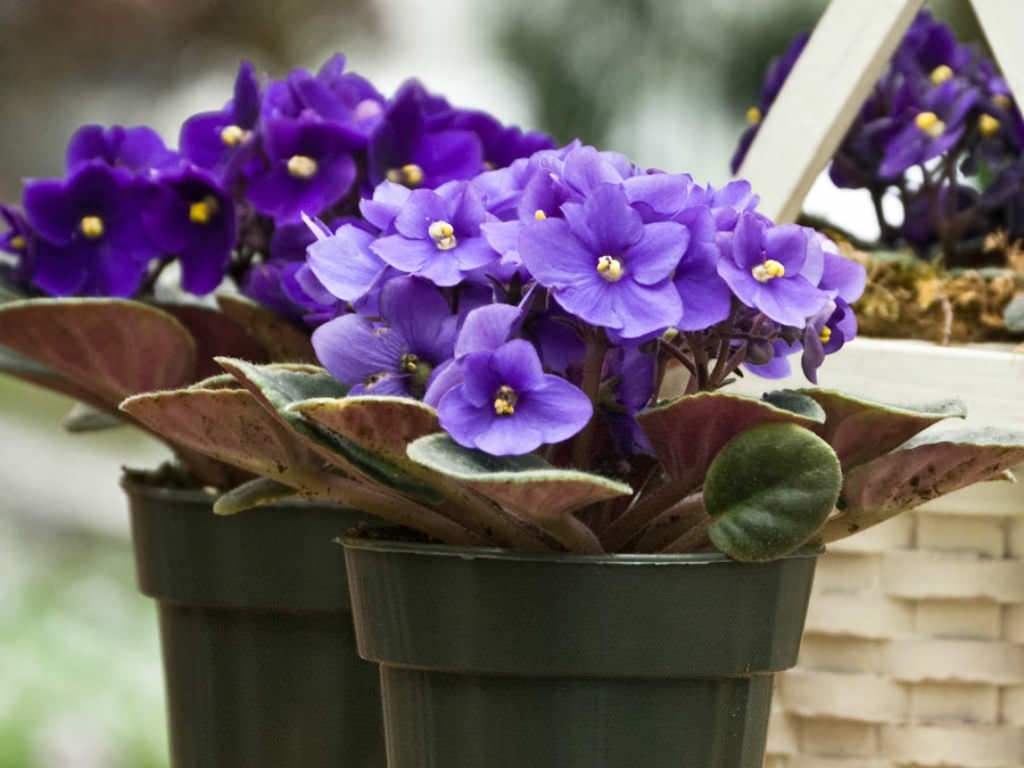
| Scientific Name | Saintpaulia ionantha |
| Common Name | Usambara Violet |
| Origin | East Africa |
| Family | Gesneriaceae |
| Plant Type | Perennial |
| Soil Requirements | Well-drained, loamy |
| Blooming Season | Year-round |
| Light Exposure | Bright, indirect light |
| Size | 6-12 inches |
| Plant Zone | Warm |
| Growth Rate | Moderate |
| Toxicity | Non-toxic |
The African Violet is popular for its velvety, heart-shaped leaves and abundant flowers in purple, pink, white, and bi-colored varieties. It’s native to the Usambara Mountains of eastern Africa and thrives in warm, humid environments.
It has air-purifying qualities and is compact, making it ideal for apartments and small spaces. Its vibrant flowers can also add a touch of color and charm to windowsills, patios and porches.
15. Bromeliads (Bromeliaceae spp.)
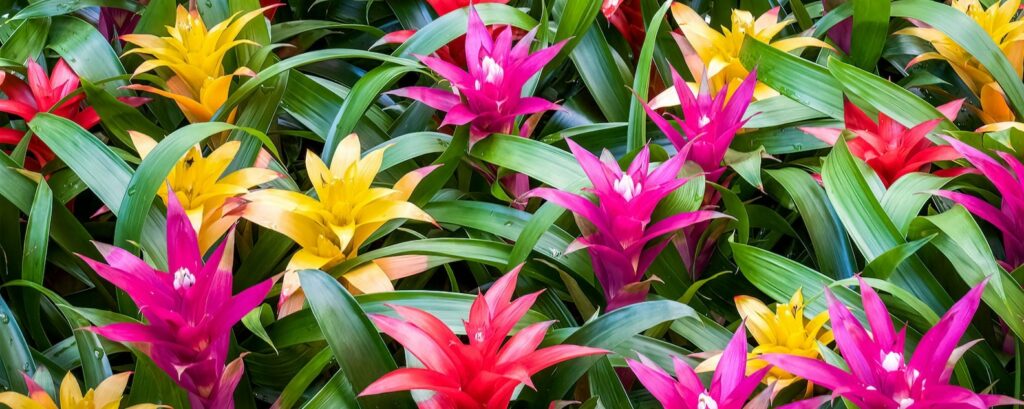
| Scientific Name | Bromeliaceae spp. |
| Common Name | Bromelias |
| Origin | Central and South America |
| Family | Bromeliaceae |
| Plant Type | Perennial |
| Soil Requirements | Well-drained, sandy |
| Blooming Season | Spring to fall |
| Light Exposure | Bright, indirect light |
| Size | Varies by species |
| Plant Zone | Tropical |
| Growth Rate | Varies by species |
| Toxicity | Mildly toxic |
Bromeliads are known for their cup-shaped rosettes that collect water and nutrients. They’re indigenous to the tropical and subtropical regions of the Americas, Africa, and Asia and grow as epiphytes, which means they attach to other plants or trees to grow.
They add a touch of the tropics to any room and can be placed on windowsills, shelves, or even hung from the ceiling. You can grow them outdoors in pots, hanging baskets, or even in the ground while attracting pollinators like butterflies and hummingbirds.
16. Nasturtium (Tropaeolum majus)
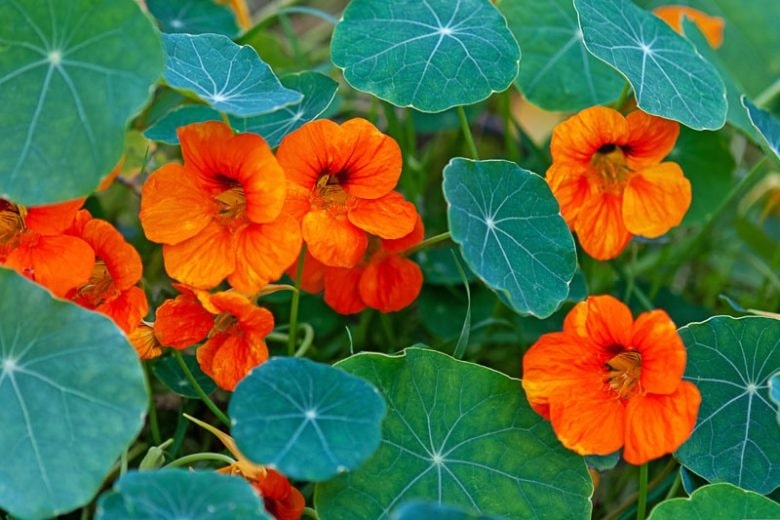
| Scientific Name | Tropaeolum majus |
| Common Name | Indian Cress, Jewelweed |
| Origin | South America |
| Family | Tropaeolaceae |
| Plant Type | Annual |
| Soil Requirements | Well-drained, loamy |
| Blooming Season | Spring to summer |
| Light Exposure | Full sun |
| Size | 6-12 inches |
| Plant Zone | Hardy in zones 9-11 |
| Growth Rate | Fast |
| Toxicity | Non-toxic |
Nasturtiums are known for their trumpet-shaped flowers that come in orange, red, yellow, or pink, adding color to any garden. They’re indigenous to South America and thrive in full sun or partial shade.
Nasturtiums are also fast-growing vines, so you can train them to climb trellises or fences, spill over containers, or even trail along the ground. Indoors, you can grow nasturtiums in pots near sunny windows, enjoying their blooms year-round.
17. Star Jasmine (Trachelospermum jasminoides)
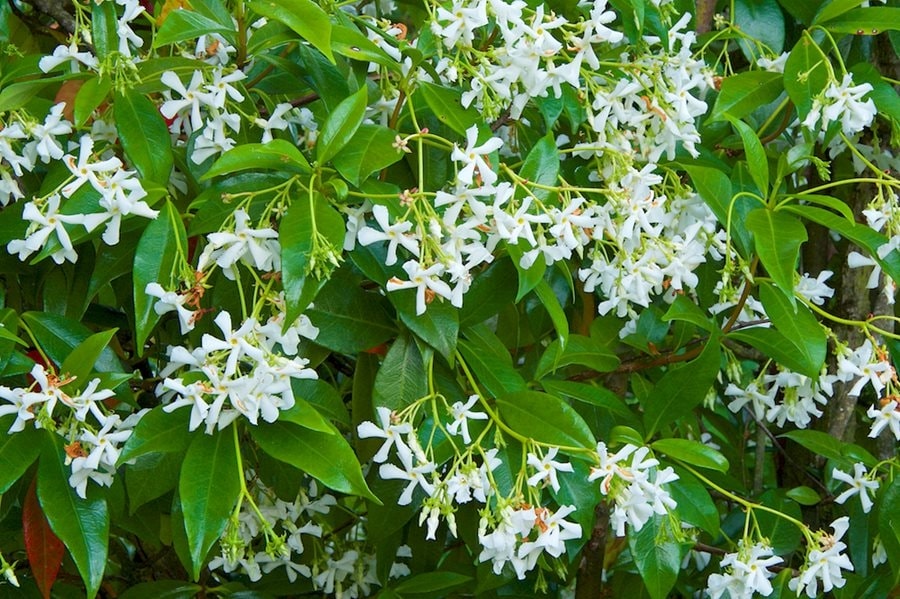
| Scientific Name | Trachelospermum jasminoides |
| Common Name | Confederate Star Jasmine |
| Origin | Southeast Asia |
| Family | Apocynaceae |
| Plant Type | Vine |
| Soil Requirements | Well-drained, loamy |
| Blooming Season | Spring and summer |
| Light Exposure | Full sun to partial shade |
| Size | 10-20 ft |
| Plant Zone | Hardy in zones 8-11 |
| Growth Rate | Moderate |
| Toxicity | Non-toxic |
Star Jasmine is an evergreen vine sought after for its clusters of star-shaped flowers that emit a sweet, jasmine-like aroma, especially at night. It’s native to Southeast Asia and is known for its air-purifying capacity to remove harmful toxins.
It’s a fast-growing climber, so you can train it to climb trees, fences, or vertical walls. Its dense foliage can also provide welcome shade to your garden or other plants during summer.
18. Red Torch Ginger (Etlingera elatior)
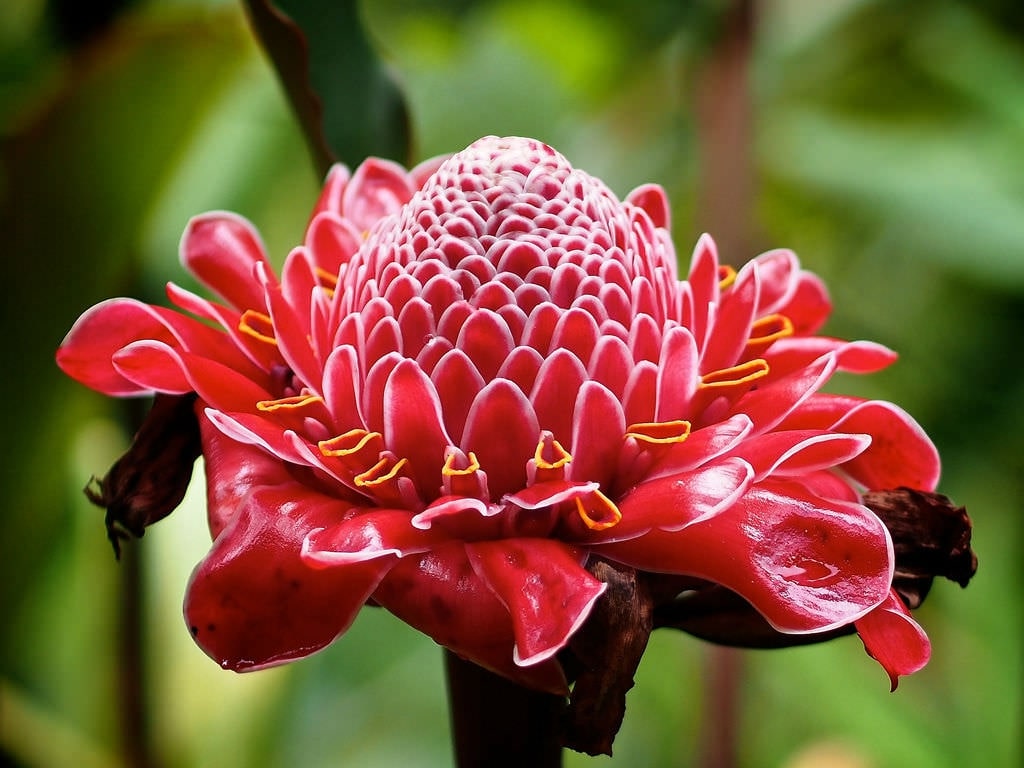
| Scientific Name | Etlingera elatior |
| Common Name | Torch Lily, Torch Ginger |
| Origin | Southeast Asia |
| Family | Zingiberaceae |
| Plant Type | Perennial |
| Soil Requirements | Rich, well-drained |
| Blooming Season | Summer |
| Light Exposure | Partial shade |
| Size | 6-10 ft |
| Plant Zone | Tropical |
| Growth Rate | Moderate |
| Toxicity | Non-toxic |
The Red Torch Ginger is known for its towering, torch-like flower spikes adorned with red bracts that look like flames from afar. It’s native to Southeast Asia and thrives in warm, humid climates, full sun or partial shade.
You can grow this plant in large pots, making it a focal point in your living space, or create a bold, tropical statement by using it as a specimen plant in your garden or patio.
19. Air Plants (Tillandsia spp.)
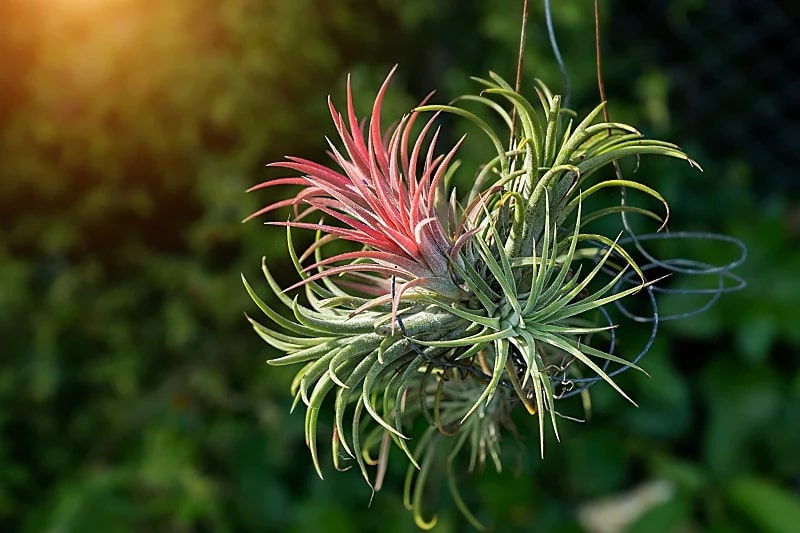
| Scientific Name | Tillandsia spp. |
| Common Name | Ginger |
| Origin | Central and South America |
| Family | Bromeliaceae |
| Plant Type | Epiphyte |
| Soil Requirements | Well-draining, airy |
| Blooming Season | Year-round |
| Light Exposure | Bright, indirect light |
| Size | 6-12 inches |
| Plant Zone | Tropical |
| Growth Rate | Varies by species |
| Toxicity | Non-toxic |
Air plants are not just for not needing soil to grow but also for their tiny yet colorful flowers that bloom all year round. They’re native to Central and South America and are low-maintenance since they absorb nutrients and moisture from the air.
Air plants are usually mounted on driftwood, shells, or other objects with small, vibrant flowers, adding beauty to any space. You can also mount them on a wall, hang them in a terrarium, or leave them in a seashell.
20. Lemon Tree Flower (Citrus limon)
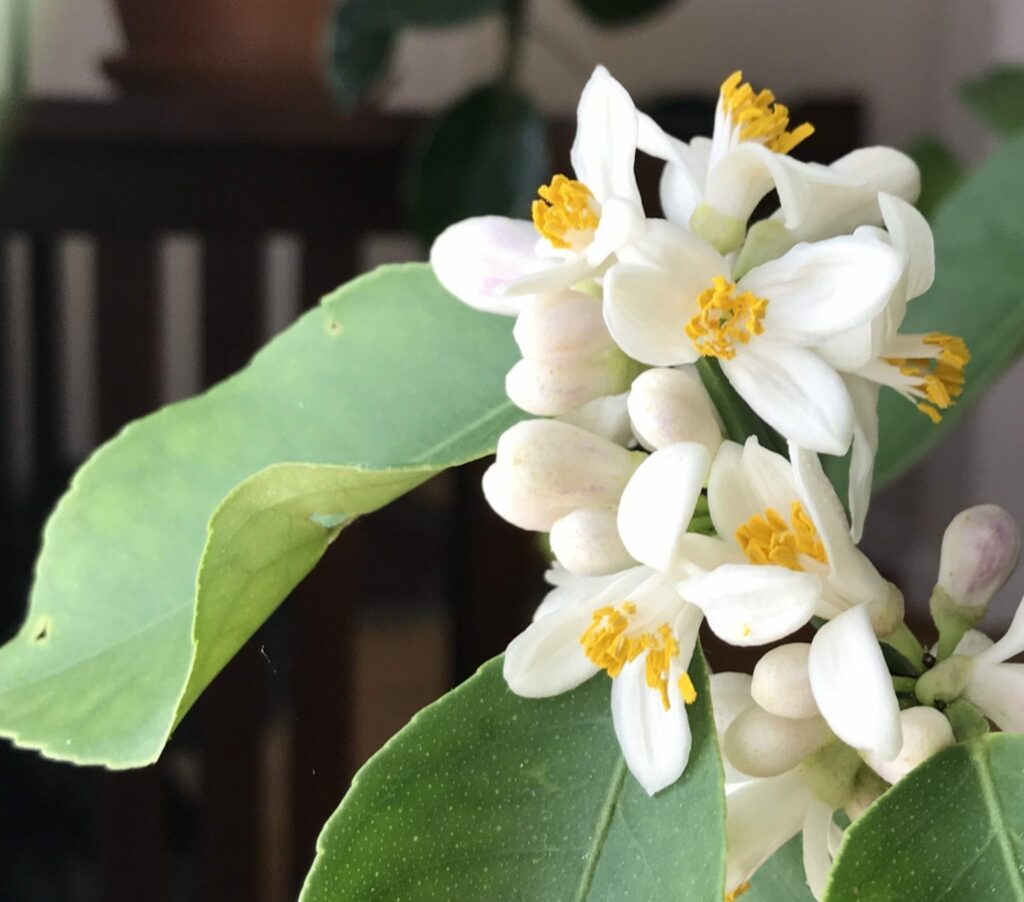
| Scientific Name | Citrus limon |
| Common Name | Lemon Tree Flower |
| Origin | Southeast Asia |
| Family | Rutaceae |
| Plant Type | Small evergreen tree |
| Soil Requirements | Well-drained, sandy loam |
| Blooming Season | Spring |
| Light Exposure | Full sun to partial shade |
| Size | 10-20 ft |
| Plant Zone | Hardy in zones 9-11 |
| Growth Rate | Moderate |
| Toxicity | Non-toxic |
The lemon tree is a citrus tree that blooms sweetly fragrant flowers year-round. It’s native to Asia and typically blooms in spring as it fills the air with its sweet aroma while purifying it.
You can grow the lemon tree in large pots near a sunny window, enjoy fresh lemons, and appreciate its beautiful flowers throughout the year. Just make sure you use well-draining soil and give it access to full sunlight.
21. Begonia (Begonia spp.)
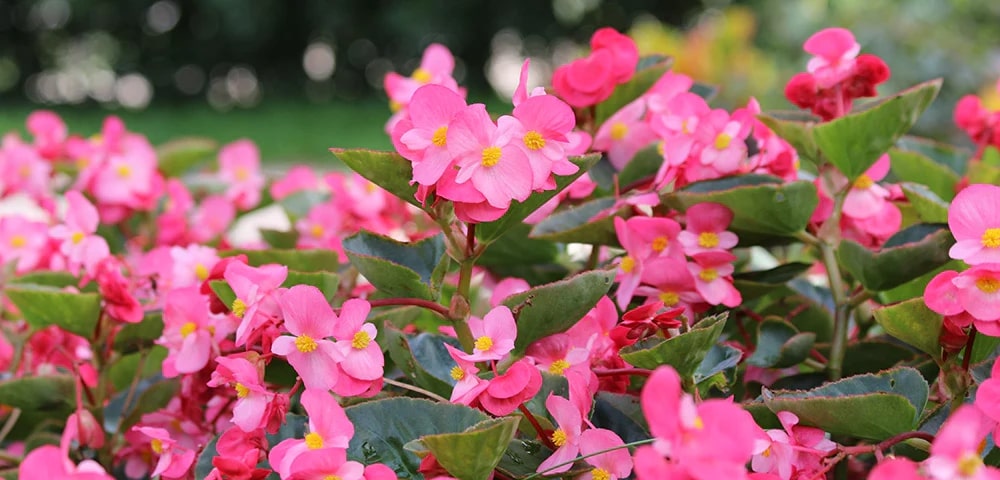
| Scientific Name | Begonia spp. |
| Common Name | Begonia, Angel Wing Begonia |
| Origin | South America, Africa, Asia |
| Family | Begoniaceae |
| Plant Type | Flowering annual/perennial |
| Soil Requirements | Well-drained, moist |
| Blooming Season | Spring to fall |
| Light Exposure | Bright indirect light |
| Size | 6-36 inches |
| Plant Zone | Tender (USDA zones 9-11) |
| Growth Rate | Moderate |
| Toxicity | Slightly toxic |
Begonias are known for their large, delicate, cascading flowers and textured leaves. They thrive in tropical and subtropical regions and bright, indirect sunlight, adding a touch of joy and beauty to living spaces.
Begonias are best used as borders, containers, or groundcover, creating a vibrant and eye-catching display in gardens and patios. They will also help remove harmful toxins from the air, creating a healthier and fresher outdoors for you.
22. Lavender (Lavandula angustifolia)
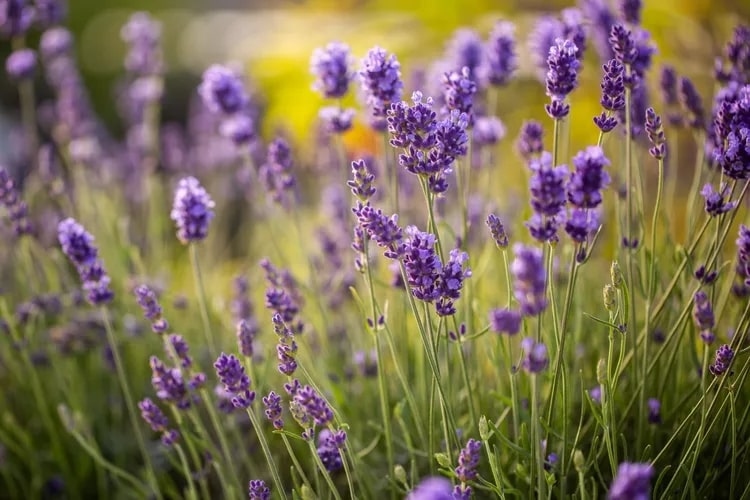
| Scientific Name | Lavandula angustifolia |
| Common Name | Lavender, English Lavender |
| Origin | Mediterranean region |
| Family | Lamiaceae |
| Plant Type | Flowering perennial |
| Soil Requirements | Well-drained, sandy |
| Blooming Season | Summer |
| Light Exposure | Full sun |
| Size | 1-3 feet |
| Plant Zone | Hardy (USDA zones 5-9) |
| Growth Rate | Moderate |
| Toxicity | Non-toxic |
Lavender is popular for fragrant, purple-colored flowers that bloom in spikes and silvery-green foliage, adding a touch of elegance to any garden. This plant is native to the Mediterranean and Middle East and thrives in warm climates and well-drained soil.
You can grow them in pots near sunny windows or plant them in borders, containers or as a hedge. With its year-round blooms, you’ll see bees, butterflies and other pollinators
drawn to its nectar-rich flowers.
23. Verbena (Verbena x hybrida)
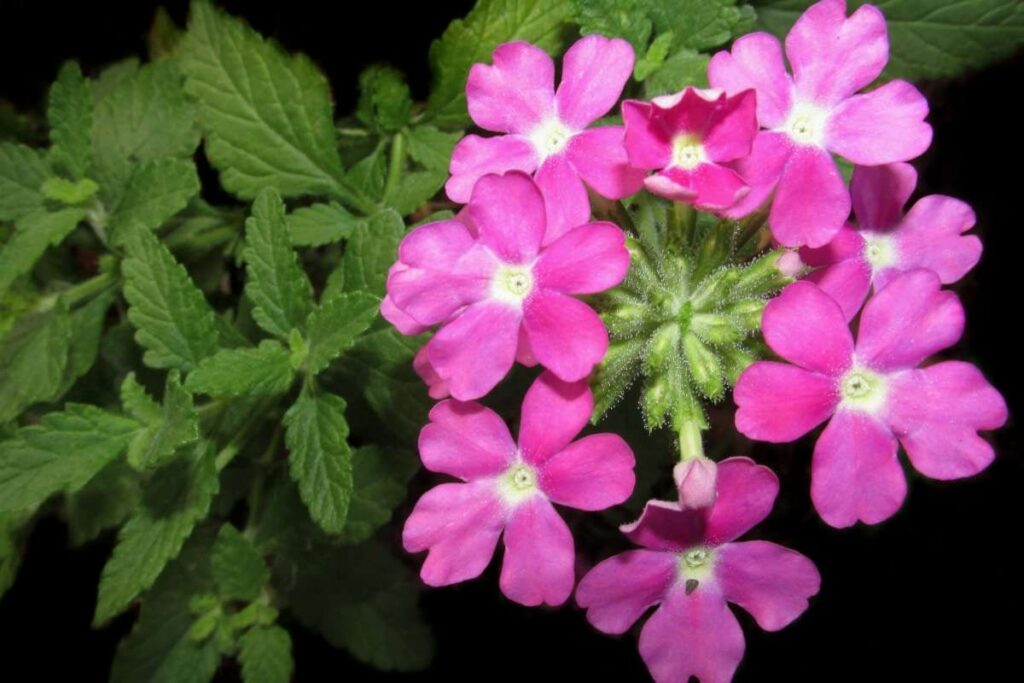
| Scientific Name | Verbena x hybrida |
| Common Name | Verbena, Garden Verbena |
| Origin | South America |
| Family | Verbenaceae |
| Plant Type | Flowering annual/perennial |
| Soil Requirements | Well-drained, moderately fertile |
| Blooming Season | Spring to fall |
| Light Exposure | Full sun to part shade |
| Size | 1-3 feet |
| Plant Zone | Tender (USDA zones 8-11) |
| Growth Rate | Fast |
| Toxicity | Non-toxic |
Verbena boasts vibrant flower clusters in various colors, including purple, pink, blue, and white or bi-colored flowers or intriguing foliage patterns. They’re native to North and South America, Europe, and Asia.
It has a trailing growth habit, which makes it ideal for borders, containers, hanging baskets, groundcover, or cascading over containers. Bees, butterflies, and hummingbirds also love its nectar-rich flowers, promoting a healthy ecosystem.
24. Penta (Pentas lanceolata)
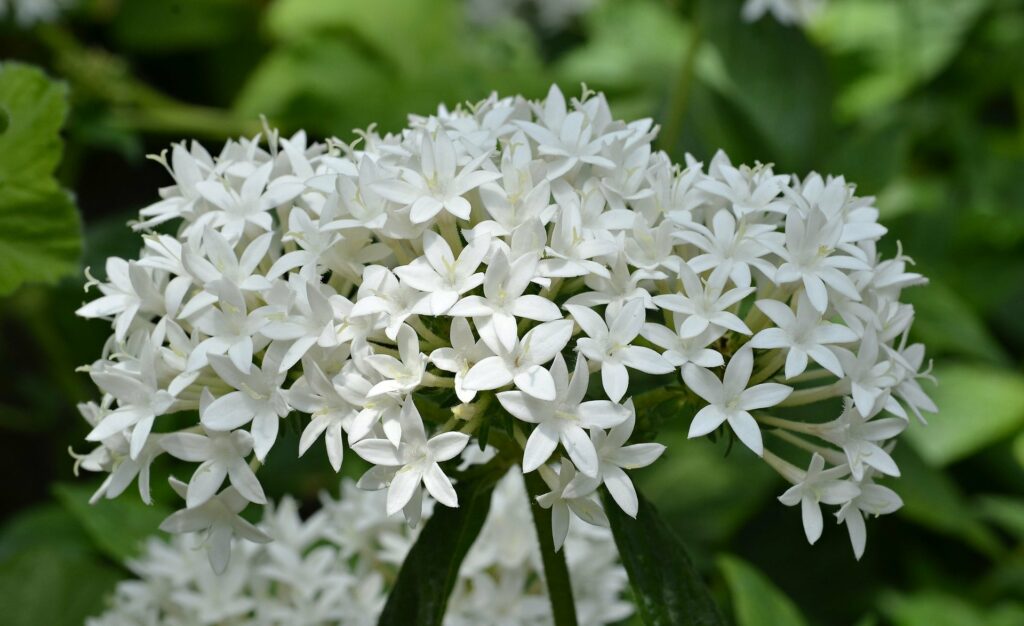
| Scientific Name | Pentas lanceolata |
| Common Name | Penta, Egyptian Star Cluster |
| Origin | Africa |
| Family | Rubiaceae |
| Plant Type | Flowering annual/perennial |
| Soil Requirements | Well-drained, fertile |
| Blooming Season | Spring to fall |
| Light Exposure | Full sun |
| Size | 1-3 feet |
| Plant Zone | Tender (USDA zones 9-11) |
| Growth Rate | Fast |
| Toxicity | Non-toxic |
Pentas produce clusters of star-shaped flowers that bloom continuously and attract butterflies and hummingbirds like magnets. They’re native to Africa and Arabia, thrive in warm, sunny climates and tolerate heat and humidity.
It has a bushy growth habit, making it perfect for borders, containers, groundcover and as a bedding plant. You can also grow them in bright, sunny windows and enjoy the sight of their colorful blooms inside your home.
25. Geranium (Pelargonium spp.)
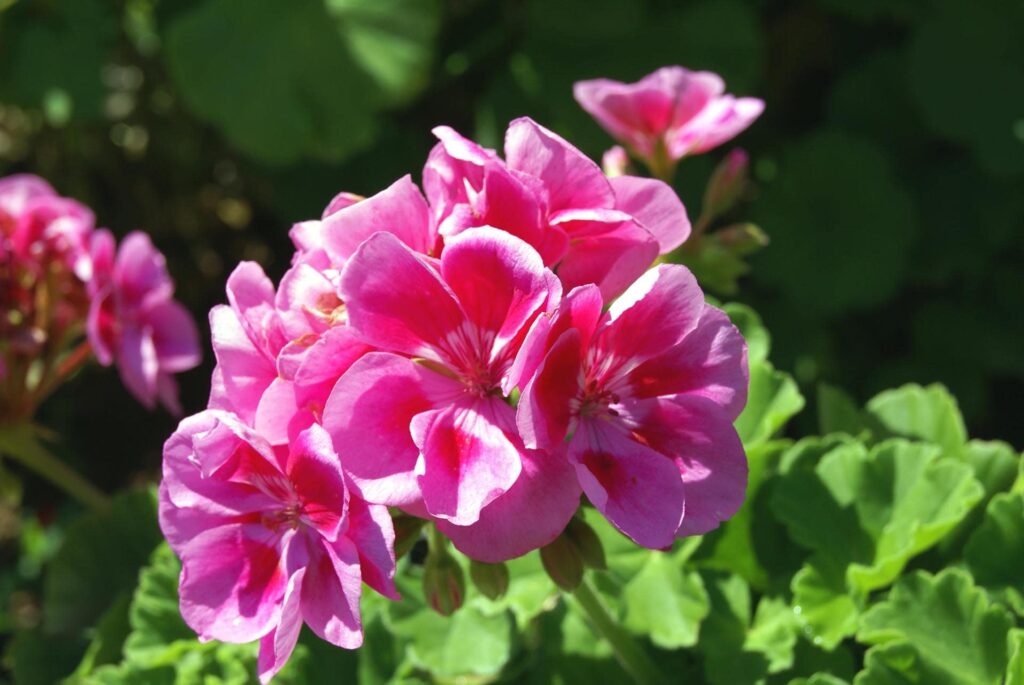
| Scientific Name | Pelargonium spp. |
| Common Name | Geranium, Zonal Geranium |
| Origin | Africa, South America |
| Family | Geraniaceae |
| Plant Type | Flowering annual/perennial |
| Soil Requirements | Well-drained, fertile |
| Blooming Season | Spring to frost |
| Light Exposure | Full sun to part shade |
| Size | 1-3 feet |
| Plant Zone | Tender (USDA zones 9-11) |
| Growth Rate | Moderate |
| Toxicity | Non-toxic |
Geraniums are captivating for their saucer-shaped flowers that bloom a kaleidoscope of colors, from classic red and pink to bi-colored varieties. They are originally from southern Africa and are generally resistant to common pests and diseases.
You can grow them in bright, sunny windows and enjoy their fragrant blooms. They also grow well as borders, containers, hanging baskets, or groundcover, adding vibrant color and attracting pollinators to your garden.


